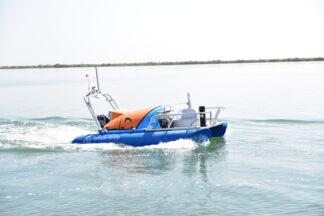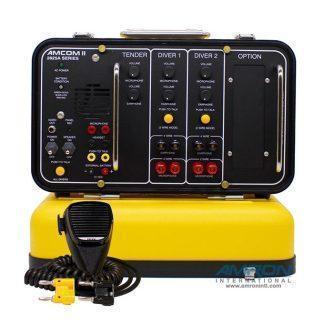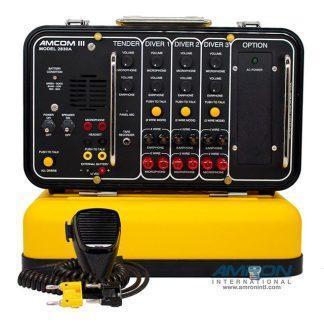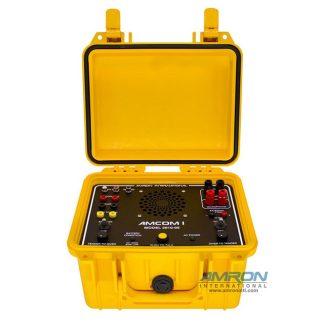Client Name: An Engineering Company
Summary of the Project
Unique Group successfully supported a client with the 12 km section, nearshore to beach landing of a pipeline survey measuring the cathodic potential, field gradient and depth of burial of a 36” pipeline in extremely shallow waters using our Uni-Pact USV.
Client Requirement
The client was contracted to carry out a survey of an existing 36” pipeline, along a 177km route. The inshore portion of the survey was in extremely shallow water and had proved difficult to survey by traditional inshore survey vessels.
The main scope of Unique Group’s solution was to measure the cathodic potential, field gradient and depth of burial of the pipeline inshore of Rotumeroog Island using the Uni-Pact USV.
Challenges Faced
The tidal restraints, and varied water depths between 0.6 m and 3.0 m along the 12 km nearshore section of the pipe, meant vessels had failed to gather CP and Depth of Burial data since installation over 20 years ago. Simultaneous data acquisition of the full suite of survey sensors in a single pass was critical to complete the scope of work in a timely manner.
Unique Solution Delivered
As traditional survey vessels could not be used due to the shallow depth, Unique Group proposed to equip the Uni-Pact USV with the required sensors and to use it to perform the survey. Based on the client’s requirements, the following sensors were installed on the Uni-Pact:
- TSS HydroPACT 660E Subsea Cable Tracking System
- Norbit Winghead Multibeam Echo Sounder
- FIGS Cathodic Protection (CP) system
The flexibility of the Uni-Pact’s architecture and hull allowed all three sensors to be fitted for simultaneous acquisition in a single pass mission. The TSS 660E Cable Tracking System was installed on a raft that was pushed ahead of the Uni-Pact. The Force Technology FIGS CP system was mounted across the deck, to provide an accurate measurement of the electric fields surrounding the pipelines, thus providing us with the status of the cathodic protection (CP). The Norbit Winghead Multibeam Echo Sounder was fitted to Uni-Pact’s retractable survey pole. Integration of the three sensors, which was the first time that such a configuration had been attempted, took a week, from designing the raft, engineering and testing the setup. On site mobilisation was performed in under two hours.
The Uni-Pact’s autopilot coped very well with the addition of the raft and the additional weight of the Pipetracker. The Uni-Pact has an onboard PC dedicated to running the survey software and sensor applications (in this case it was running Eiva Navipac). This makes it easy to reconfigure the Uni-Pact when different sensors or survey packages are required. In addition, this also ensures that the vessel control software and autopilot are unaffected should anything untoward happen to the survey PC. The flexible architecture of the control systems on the Uni-Pact enabled, an additional PC to be added to the network onboard the Uni-Pact and accessed over the remote telemetry link. This permitted Force Technologies to use their own laptop, preconfigured with the necessary software for the FIGs CP system.
Overall, the client was very pleased with the results collected, and they were able to gain valuable data regarding the condition of their pipeline.
Benefits Delivered
- A customised solution specifically designed for the client’s needs.
- Seamless and efficient shallow water survey completed.
- Time-saving and cost-efficient: The project was completed in a shorter time than conventional methods, thus also saving costs.
- Environment friendly: The Uni-Pact USV is a completely environmentally friendly solution, as it is operated on electric engines which make negligible noise, thus reducing disturbance to the aquatic ecosystem.
- Autonomous and remote solution: This project demonstrated the benefits of working autonomously and remotely.
- Quick and easy solution: Uni-Pact reduced the process complexity as it is a lightweight and easy-to-deploy solution.
- Expert technical support was provided from the beginning of the project till the end, thus enabling the client to make the best decision for the project.
Client Name: An Engineering Company





